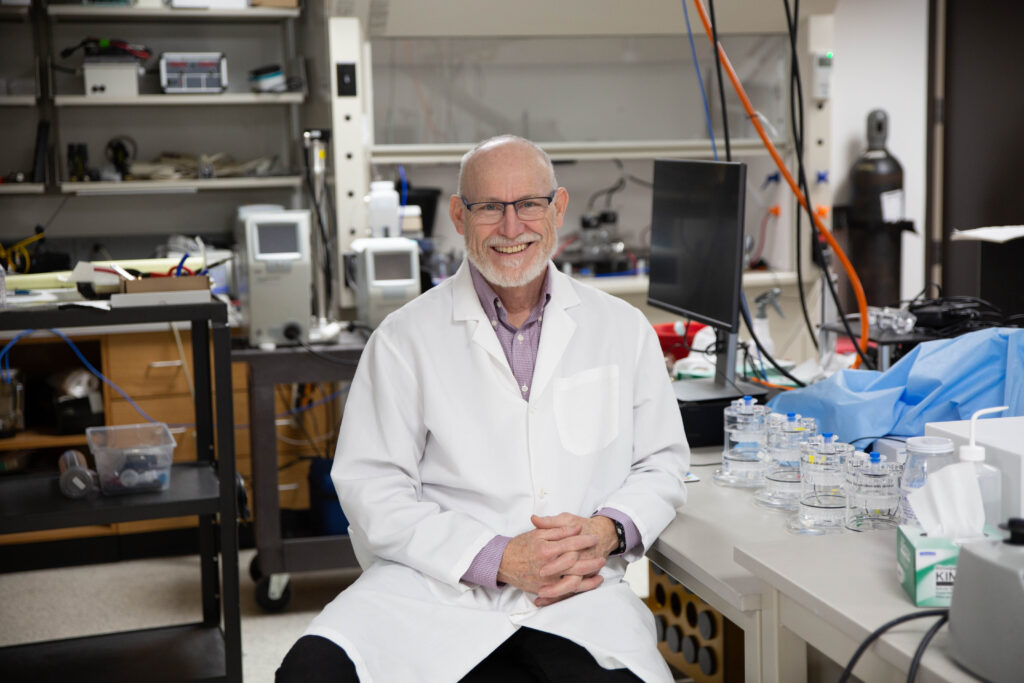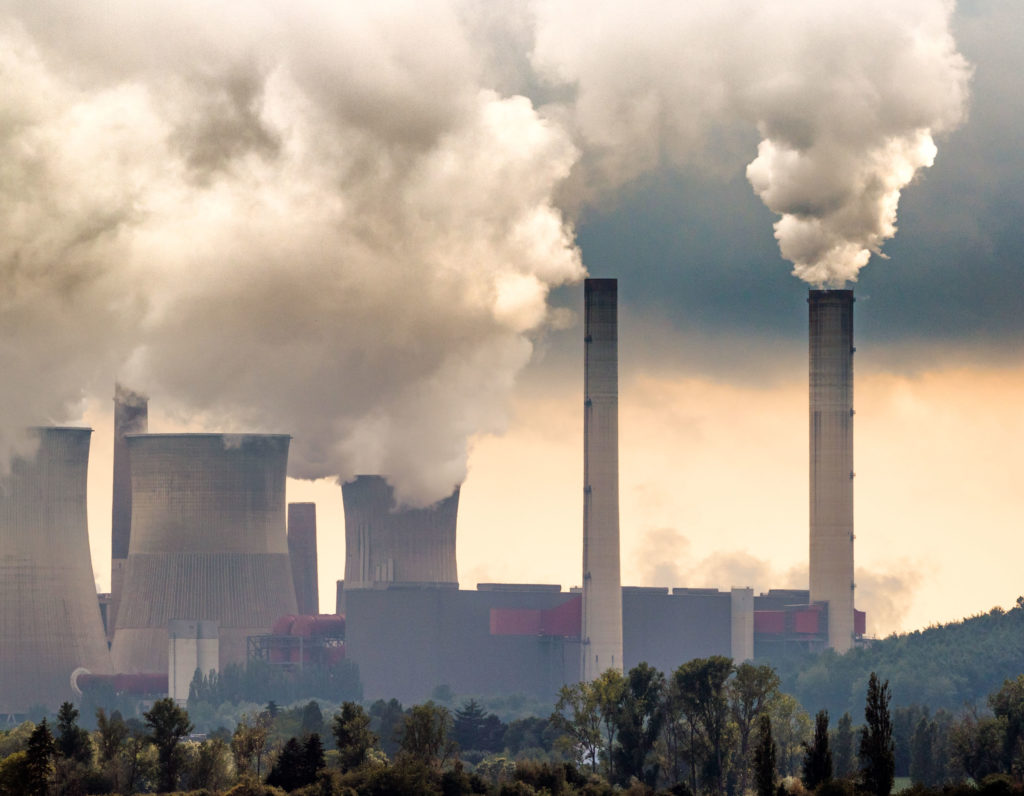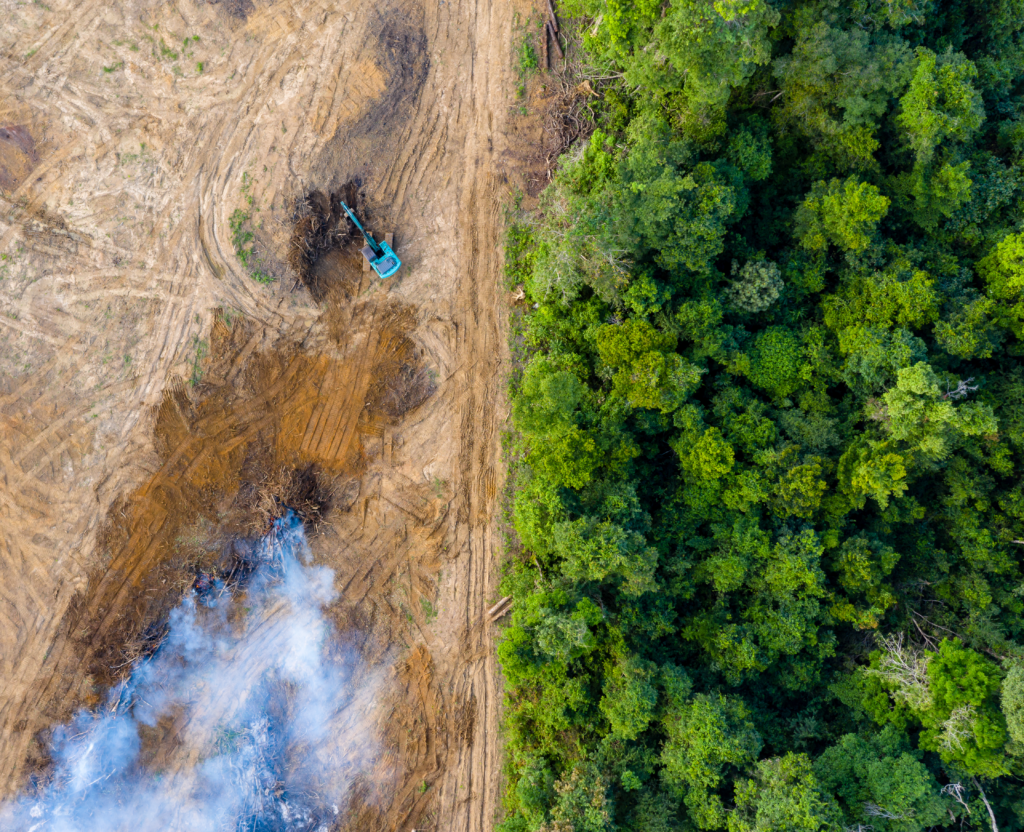Breadcrumb
Q&A: Peter Thorne on the challenges of climate change
By Dan McMillan
Published on December 14, 2021

In August 2021, Peter Thorne, professor and head of occupational and environmental health, was named to the Science Advisory Board (SAB) of the U.S. Environmental Protection Agency (EPA). He previously served on the SAB from 2011-2017 and served as its chair from 2015-2017. The board provides scientific expertise and recommendations for environmental quality standards and other policies intended to protect public health and the environment. Thorne recently answered questions about climate change, the role of the SAB, and what actions are needed to reduce global warming.
The environmental agenda today is heavily focused on concerns about Earth’s changing climate. What role does the EPA have in developing science related to climate change and advancing initiatives to address the health effects of a warming climate?
The Supreme Court ruled in Massachusetts vs. EPA that the EPA has the authority under the Clean Air Act to regulate greenhouse gas emissions because they “cause or contribute” to global warming and “may reasonably be anticipated to endanger public health.” EPA has a major role to play in efforts to reduce emissions. Unbiased, sound science is the foundation of EPA regulations and the Science Advisory Board exists to ensure that EPA is applying the most cutting-edge science in all its decision making.
As the United States transitions from a fossil fuel-based electricity and transportation infrastructure to renewable energy systems, we will see significant health benefits associated with reduced air pollution. Many EPA regulations require an integrated science assessment, cost-benefit analysis, and extensive review. The future health benefits of actions to mitigate climate change are complex to quantify. The EPA relies on peer-reviewed science, its own experts, and its advisory boards in formulating and evaluating this rule making.

At the EPA, where does climate change rank among the many priorities before the agency and the SAB?
Two broad areas have risen to the top and really emanate from President Biden’s campaign promises. The first is programs and policies to mitigate greenhouse gas emissions and to prepare for the impacts of climate change. The second is delivering environmental justice to ensure that low-income people and people of color will no longer bear the heavy burden of exposures to environmental toxicants. These two areas are related because environmental justice includes climate justice. We know that people of low socioeconomic status already suffer from climate change more than those with greater means. Another major effort is to restore the scientific integrity of the EPA which suffered from undue political influence during the last administration.
Evidence continues to mount that a warming climate adversely impacts human health across a wide spectrum. A recent study co-authored by Iowa researchers, for instance, found that drought conditions were a major contributor to increased stress among Midwest farmers. What other areas of health are environmental researchers looking at through the lens of climate change?
The evidence of global warming and anthropogenic (human-caused) climate change is overwhelming and irrefutable. There are eight major impacts of climate change on the health of the public. These are extreme heat events, more frequent and severe weather disasters, increased air pollution, increased vector-borne infectious diseases, expanding respiratory allergy, rising sea levels, impaired water quality, and environmental degradation leading to forced migration and civil conflict.
Despite widespread scientific agreement that the Earth is getting hotter, that human activity is the primary cause of this warming, and that our planet and its residents face dire consequences without immediate action to avert further warming, political and economic leaders have struggled to adopt policies to combat climate change. What more can scientists and the public health community do to influence policymakers to make the changes needed to avoid worst-case outcomes?
Scientists, the public health community, and health care professionals need to step up and inform the public and their patients that climate change is an existential threat to humankind and is the grandest challenge of the 21st century. People need to vote for candidates who understand this and have concrete plans to address climate change. We should preferentially support companies that are working to develop clean energy, e-vehicles, and green technology. Folks can easily lower their own carbon footprint and encourage others to do the same. Actions such as adopting active commuting, making our homes more energy efficient, reducing our consumption of beef, rejecting fast fashion, and reducing air travel can make a difference.
As someone who studies this area extensively, what policies do you think would get us the most “bang for the buck” when it comes to reducing carbon emissions? Should we ban internal combustion engines? Plant a billion trees? Paint every roof white? Tax carbon? All of the above or something else?

If we are to hold global warming to a 2°C (3.2°F) increase over pre-industrial conditions, we need to make dramatic and immediate reductions in greenhouse gas emissions. The U.S. has the highest per capita carbon footprint of the major countries of the world and has the second highest total carbon emissions after China. Of course, China has 3.7 times the population of the U.S.
We need to move quickly away from fossil fuels to renewables. We need to rebuild our infrastructure to be much more energy efficient. We can do those things you mentioned such as plant trees and make roofs more reflective, but we also need to recover wasted energy from our electricity generation and industrial sector. Two-thirds of the energy we generate is wasted and the technology exists to recover much of this. If we were to adopt a carbon tax and incentivize innovation, that would help propel us to the new technologies. We could retire our antiquated coal-fired power plants and grow green energy at a much faster rate.
The SAB has been a subject of controversy in recent years. In 2017, former EPA Administrator Scott Pruitt removed several academic scientists from the SAB and the agency’s other advisory boards. This year, EPA Administrator Michael Regan announced a “reset,” removing more than 45 members of the agency’s advisory boards, including some whose terms were not yet expired. To what extent do you feel the SAB has been “politicized”? How are political crosswinds impacting the work of the board and of EPA?
The Science Advisory Board and the Clean Air Scientific Advisory Committee are established by statute. What Mr. Pruitt did was unprecedented. Several federal judges ruled that the procedures he and his successor, Andrew Wheeler, used to disqualify academic scientists from science advisory boards and committees violated the Federal Advisory Committees Act. So current EPA Administrator Regan really needed to reconstitute these committees to correct this abuse and comply with the law.
I think the EPA has returned to procedures that have been followed by Democrats and most Republicans since its inception in 1970. It is never smooth sailing for a regulatory agency but the seas have certainly calmed. The reset SAB has 47 outstanding scientists who have complied with all ethics and disclosure rules and are now doing the job of evaluating the science that drives EPA actions.
The city of Seville in Spain recently announced that it would begin naming and ranking heat waves, much like forecasters do for hurricanes, as a way to call attention to the health risks of extreme heat. Is this a gimmick? What do you think of this and other novel approaches to raise awareness about the dangers of climate change? Are there other steps leaders are talking about—or should be taking—to create urgency around climate action?
It is important to track these climate exacerbated extreme events as they become more frequent and more severe. In the U.S. we have witnessed a steady increase in annual billion-dollar disasters. We name these—some are hurricanes like Katrina and Sandy and some are wildfires like the 2018 Camp Fire and the 2021 Dixie Fire. Similarly, it makes sense to name extreme heat events and track their impacts. The estimated death toll from the 2003 European heat wave was 70,000 people, so we do need to raise awareness of these events and understand that they are arising because of anthropogenic global warming.
This story originally appeared in the fall 2021 issue of InSight.